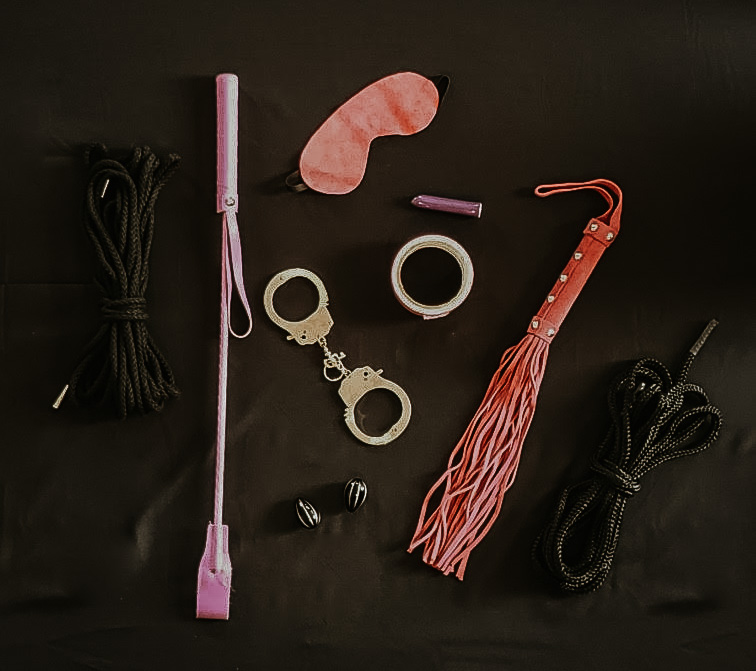Shining a light on kink culture


Disclaimer: The author of this article not a fetish expert and is not trying to insert herself in the community. She is just interested in the subject.
When people hear the word “fetish,” their first thought is probably Fifty Shades of Grey-esque BDSM.
And perhaps it’s not wrong to say that this franchise brought edgier and obscure sex practices to the forefront of discussion. But regardless, it almost goes without saying that fetishes are largely misunderstood by the general public.
“I think one of the most important things to recognize with fetishes are that oftentimes it’s not creating any kind of harm. Most people, if they’re sort of in the kink community, have a good understanding of sort of how to manage their fetishes, how to find partners or [a] partner who are interested in kind of living out some of those fetishes,” said Jessica Crowe, individual therapist and sex and couples’ counsellor at Exhale Therapy in Kitchener.
“If you look at it in the wheelhouse of diversity, then it’s an understanding that it’s just one of many different diverse expressions of being a sexual human.”
One definition of fetishism states that, “a fetish is sexual excitement in response to an object or body part that’s not typically sexual.”
This could include, but is not at all limited to: body parts, body features, body fluids and body size. Clothing items, or certain textures and materials are also common.
But if anything is clear from this definition, it’s that fetishism is a very broad term, and that it is not easily defined.
Overall though, it is unclear as to whether sexual fetishism is a common occurrence or not.
“It’s interesting, there’s not really good statistical data to sort of give a clear number on who has [or] who is predisposed to have fetishes or how many people are fetishistic,” Crowe said.
I think one of the most important things to recognize with fetishes are that oftentimes it’s not creating any kind of harm.
– Jessica Crowe, individual therapist and sex and couples’ counsellor at Exhale Therapy in Kitchener.
“A smaller percentage is expected, so not a high percentage of people. However, what we always tell people is that when any sort of sex research is being done, it’s going to take a certain type of person to step forward and actually say ‘yes I have this.’ So, things where there’s higher stigma around it, we’re not likely getting a good sample, so it’s really hard to say how common it really is.”
There is no conclusive research as to how fetishes are developed either, explained Crowe.
“There’s sort of nothing really conclusive — there are still theories around how fetishes develop. What research does indicate is that they usually are developed before the age of 18 and some research suggests that it happens earlier on in childhood.”
Crowe also explained that there is also a debate over whether fetishism is innate — if people are predisposed to developing them — or if they are developed over time.
“There’s sort of a bit of a nature versus nurture debate in terms of how these things come to the surface. So, if it’s more bound in nature then the idea is that the brain is just sort of predisposed and wired this way, and if it’s more on the nurture side there’s belief that it’s more behaviourally bound.”
“Sometimes it could be some classical conditioning or it might be an imprinted behaviour, so they’re not 100 per cent certain.”
For most people, trying to think of examples of fetishes might invoke some very unconventional or uncommon examples.
In reality though, most people are probably practicing some very basic fetishistic behaviour in their own sex lives, such as spanking or wearing lingerie for example, as these behaviours overlap with more-developed fetishistic behaviour.
At the same time though, the previously listed behaviours cross between the boundaries of erotic preferences, rather than full-fledged fetishes.
“Fetishes tend to be a bit of a more narrow definition where, if you’re talking more about erotic preferences, it’s more of an umbrella term that is kind of a larger scope. So, they’re both in the same wheelhouse but there is a little bit of a difference,” said Crowe.
Under most circumstances fetishes are not meant to be considered harmful in any manner, especially for consenting individuals, explained Crowe.
“One of the things that is usually defined in terms of a fetish being harmful is usually if it’s causing a lot of significant distress to the individual experiencing it — so, if it feels almost obsessive or intrusive. What can be really challenging though, is that somebody might be experiencing distress with a fetish not because of the fetish, but because of sort of the social structures or rules around what is sort of permissible and what isn’t.”
“I would say from a therapeutic standpoint, my job is to sort of do some deconstruction with people and assess, ‘is this interfering in your life, is this something where it’s all you can think about, is it the only way if you can kind of have a sexual experience or is it something that’s grounded in shame or stigma and you’re actually quite okay with the behaviour, and you enjoy it and it happens in a consensual space’ and really what you’re needing to work through is just letting go of some of the social stigma around it?”
For those who are interested in exploring the topic of fetishism further, Crowe suggests finding a support network.
“There are lots of different opportunities for support, whether that’s looking to kind of join a kink community, whether that’s looking to seek a therapist, whether that’s trying to find someone who can support you. Just [know] that you don’t have to deal with those kind of things on your own if it feels distressing.”


